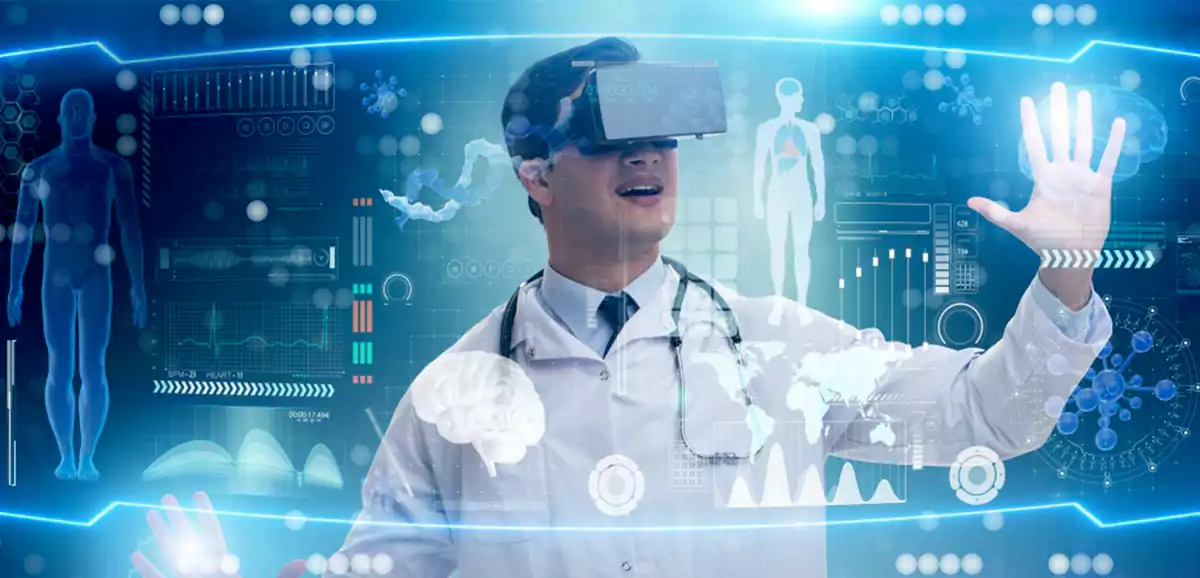The healthcare industry is undergoing tremendous change through the implementation of cutting-edge technologies. The application of the Internet of Things in healthcare is growing at one of the higher industry growth rates (15.4%) according to IDC, and 57% of 451 Research healthcare survey respondents are collecting endpoint data from their medical devices. New use cases for IoT are emerging such as remote patient monitoring. Artificial intelligence is playing a critical role; it’s able to find patterns in terabytes of patient data to inform doctors on diagnosis and even identify risks of disease.
However, there is also significant disruption for medical professionals and how they tap into the wealth of digitized information created by IoT, AI and other data sources. Augmented reality is the emerging lens into this digital healthcare ecosystem and is poised to transform healthcare practices across crucial functions including education, training, service, and even in-practice usage.
A New Way of Educating and Learning
The costs for medical school continue to surmount with the median four-year expense reaching upwards of $278,000 yet learning methods have not significantly changed with this price increase nor have they capitalized on new technologies. The amount of ‘information overload’ in medical institution classrooms is understandably comprehensive considering the complexity of the human body and information available. But delivering this magnitude of ‘just-in-case’ information does not favor the likelihood of knowledge retention, different learning methods, or necessarily scale to skills needed for extremely complicated procedures in the operating room.
Augmented reality is the tool to bring medical students on-demand ‘just-in-time’ information and usher in a new way of learning. A student can safely operate on a virtual human with digitized anatomy information presented in context and simulate actions within the environment.
AR is not only a better way for medical professionals to learn, but also is a tool to assist in patient care. For example, PTC is working with Boston Children’s Hospital to develop AR technologies and use cases that will help children with autism. Dr. Howard Shane points out that two major challenges facing a child with autism are communication and attention; AR visually communicating tasks for brushing teeth in-context is one potential groundbreaking application leveraging the senses native to AR headsets.
Training and Knowledge Transfer
Learning and training doesn’t stop at the graduation ceremony for medical students; it’s an on-going process and it can take several years for a medical professional to reach domain expertise. The stakes are only increasing with the global shortage of medical personnel including in the US, there is estimated be a shortage of up to 120,000 physicians by 2030.
Augmented reality is a natural knowledge transfer technology where companies can seamlessly scale expertise to less-experienced personnel. A senior-level physician can connect with geographically dispersed medical personnel through real-time collaboration to identify with annotations patterns on a patient and lead to a diagnosis. Augmented reality can also capture domain knowledge procedural information (like running an MRI) from experienced technicians and scale it to junior-level personnel.
Maintaining Uptime for Medical Equipment
The complex healthcare industry spans past the role of a doctor, especially with increasingly sophisticated medical equipment for MRIs, vital monitoring, and ultrasounds. Hospitals simply cannot afford unexpected downtime of medical equipment when patient health is on the line. While the IoT is analyzing their assets’ health to drive uptime, AR is becoming the increasingly crucial servicing tool for maintenance procedures.
Sysmex has equipped its field service technicians with guided AR work instructions for tending to deployed machines, replacing outdated and cumbersome paper manuals. Sysmex technicians can quickly identify and fix potential issues, improving service efficiency and machine uptime KPIs.
In-Practice Use Cases
Doctors and even surgeons using AR in-practice presents a variety of cutting-edge applications. AR can bring a surgeon all prudent patient (electronic medical records, MRI and X-ray data) and procedural (surgery steps, considerations) data into a single field-of-view, reducing cognitive distance from analyzing multiple 2D panels of siloed information.
Consider this emerging use case: Microsoft is building on the concept ‘image-guided therapy’ where it aims to take real-time data feeds from its partner Philips’ equipment and present it in the surgeon’s field-of-view with a HoloLens. A surgeon could navigate a single screen of data through voice recognition or eye tracking between real-time patient vitals or medical imaging body scanners.
This idea isn’t far-off, AR is being used to help medical professionals under the ‘augmented diagnosis’ use case today. AR is visualizing vein location under the skin to improve ‘first stick’ rate and patient satisfaction. Another AR application is seeking to overlay a patient’s simulated conditions of a particular illness.
As healthcare organizations continue to undergo digital transformation initiatives across their value chain, we anticipate the role of augmented reality to increase across functions. Related industries to healthcare, professional services and life sciences, are verticals increasing in in AR adoption as cited in PTC’s State of Industrial Augmented Reality 2019.

source:https://www.ptc.com/en/blogs/corporate/augmented-reality-in-healthcare

